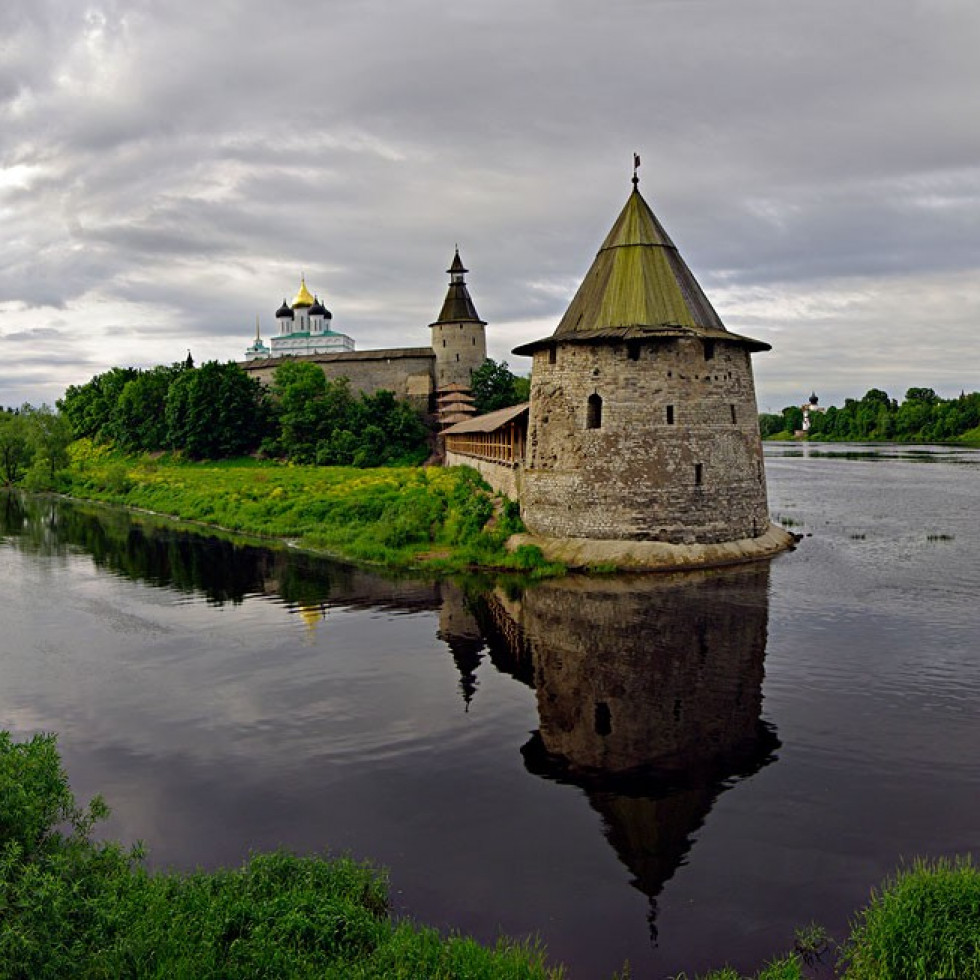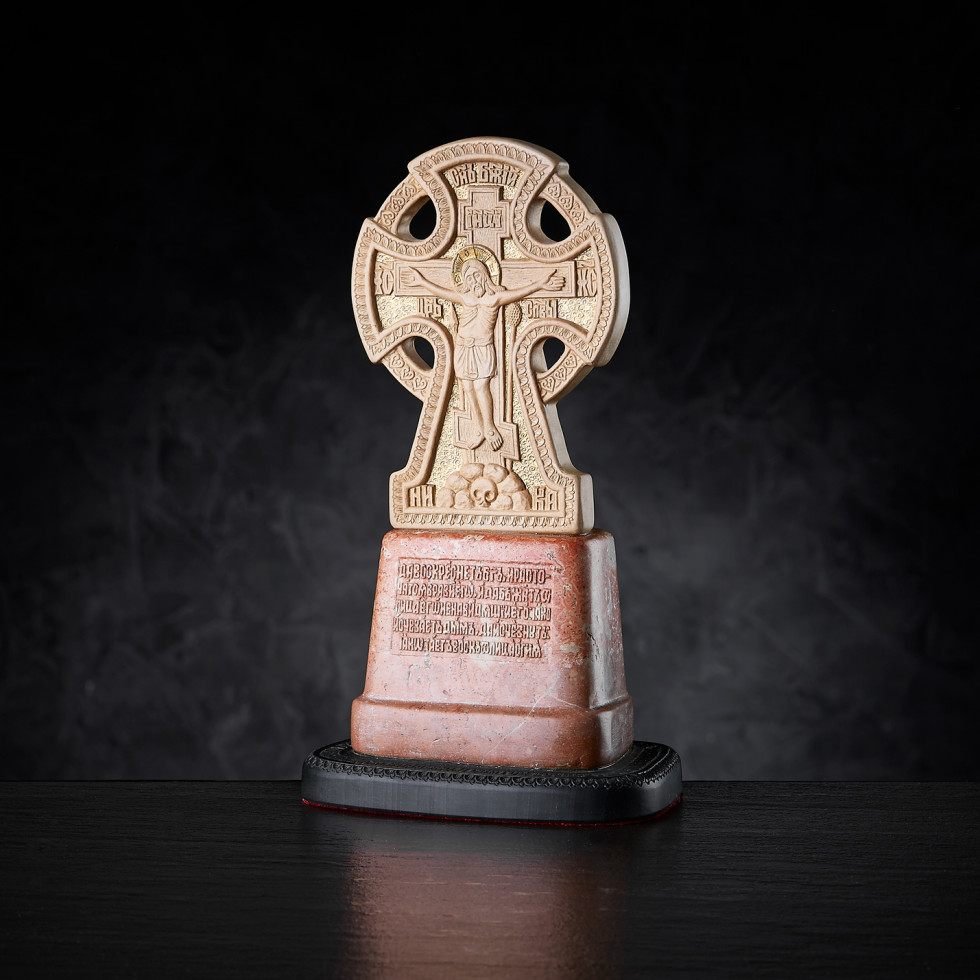Biography childhood
Grandmother Paraskeva raised the artist before school. With a leisurely measured step, the grandmother of the future artist of Orthodox images led her to the only functioning temple in the city: the Church of Paraskeva Friday. And although it was a long way, the grandmother was old, and the little boy was tired, they only walked, because "the Lord gave them legs," as Vladimir recalls now.
At school, Vladimir was attracted to "romantic" sciences: history, geography, geology, and applied sciences: labor, drawing. Although the future artist was not satisfied with the narrow specialization of nearby colleges, he chose industrial after school, where he was most interested in sciences related to technology such as materials science or copromat.
After completing a 2-year course in mechanics, Vladimir went to the Kometa military plant, where he mastered working with the material. The knowledge gained in college and at the factory greatly helped the artist at the beginning of his work with stone, when he had to use improvised materials in stone processing.
artist
His military service took place in the north, on the Kola Peninsula, where the artist found his small homeland. He spent his last year of service as a regimental graphic designer at the officers' house. After returning to his native factory, Vladimir also moved to the position of a graphic designer. And for himself, for the soul, he began to engage in painting and sculpture. I got to know other nugget artists: at that time, there was a series of seminars for original artists, in which artists gathered annually in the region for seminars. Vladimir's curator was Moscow master N. M. Rotanov, who instilled in future artists a taste for art, gently and delicately, without affecting either philosophy or psychology, taught them composition and artistic technique.
LOST TRADITIONS
"To do the work thoroughly, masterfully, fully, naturally, you need to study and delve into the spiritual side of what you are doing. Depth is needed. Full-fledged understanding;
Vladimir's region is rich in slate, mica, and quartzite. Their restrained but deep color scheme: from greenish-blue to black, with sparkling sparkles inside, attracted the artist's attention, and then came a memory from childhood and youth about the stone-cutting art of Ancient Novgorod, which Vladimir learned through museums. The features of fine plastics, volume, scale, depth, and most importantly, the importance and spiritual charge that these objects of art had for the Novgorodians fascinated the artist.
At one of the seminars, Vladimir Mikhailov found a stone, and, being fascinated by the fine plastics of Ancient Novgorod, embodied his ideas, obtained in museums and brochures, in a cross.
Thus, the almost lost ancient stone-cutting technique was revived in the works of a modern author. Having at his disposal the same tools as the ancient craftsmen, Vladimir began to master such a complex technique of stone processing. And only 20 years later, Vladimir added more modern tools to his arsenal.
"BREAD WILL BE MADE FROM THESE STONES.";
The creation of Vladimir's first cross coincided with the birth of his firstborn son Denis. Now Vladimir remembers that the first stone seemed to fit into his hand.
Vladimir Mikhailov spent 25 years working at the factory, and after completing his retirement, he became fully engaged in applied art. At first, this activity was a passion for Vladimir, but over time it began to bear fruit. In 1983, when Vladimir made his first cross, it was difficult to earn money in production, and the artistic hobby was a serious help for the emerging family. Gradually, what Vladimir created spread among friends and relatives, and the range of orders expanded. This is how the words from the Gospel that sunk into Vladimir's heart: "Bread will be made from these stones" became incarnate.
Working with a stone does not allow for adventures and takes a lot of time. From the wild stone to the last carnation on the box containing the creation, they were made by the artist's hands.
religion
As the artist delved deeper and deeper into technique, he also immersed himself in the spiritual essence of the objects he created, in the spiritual understanding of what he was doing.
There must be consistency and integrity in the work, Vladimir believes. The unity of matter and spirit: "To do the work thoroughly, masterfully, fully, naturally you need to study and delve into the spiritual side of what you are doing. Depth is needed. A complete understanding."
family
Vladimir is raising a son and two daughters. With the emergence of a family and the upbringing of children, Vladimir connects the formation of any personality in responsibility and obligations that a person begins to feel.
confession
Among the customers and buyers of the artist's works are the Novgorod and St. Petersburg dioceses, Moscow clergy. Many years ago, Vladimir received the blessing of the then Metropolitan of the Leningrad Diocese, Patriarch Alexy II of Moscow and All Russia.Vladimir's works are kept in churches and private collections in Russia and abroad.In 2015, Vladimir Mikhailov met with the acting Patriarch Kirill, who blessed the artist for his further work.
JEWELRY. FAMILY SHRINES
Gold and silver materials, traditional for Orthodox symbols, make it possible to create a family shrine, pass it from generation to generation, and metal allows the artist to achieve a unique and subtle elaboration of the details of the images.
"Something will last its life, peel off, wear out, and remain, perhaps, just a memory in a handful, but what is in the metal will carry a charge for many, many years. And it will pass from generation to generation. And an heirloom, or ancestral shrine, is wonderful: of course, wearing the cross that your great-grandfather wore obliges you to be worthy," the artist believes.
Since 2004, Vladimir Mikhailov has been creating a collection of precious metals. There are now more than 400 pieces of jewelry in the collection, including images of the most revered miraculous icons in Russia: the Kazan Mother of God, the Iveron Mother of God, the Tikhvin Mother of God and images of saints Nicholas, Panteleimon, Sergius of Radonezh, Seraphim of Sarov, John of Kronstadt, as well as unique complex large works made in gold: The Christmas Fold &The Nativity of Christ, the Easter Icon of the Last Supper, the Desktop icon of St. Andrew the First-Called, the smallest calendar of Orthodox Twelve-day holidays in Russia, a three-dimensional Easter folding icon the size of a pigeon egg, symbolizing the lines of Holy Scripture: The Spirit descended in the form of a pigeon.

